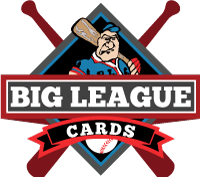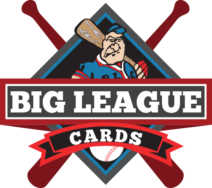Inside the Pack: Topps Goes Public
Last week, Topps announced that it was taking the company public through a special purpose acquisition company, or SPAC. After the SPAC merger is complete, Michael Eisner, the former president of the Walt Disney Company, will stay on as its chairman.
The announcement what is the major topic of conversation for most of the week in the hobby world, with many people wondering what Topps becoming publicly traded would mean from a collector’s standpoint.
Truth is, it is likely that very little will change from a standard collector’s perspective, at least in the short term. But going public changes a great deal internally for Topps, as it signals pretty clearly that the company intends to grow. Public companies also have a responsibility to deliver profit to its shareholders, which means business decisions will be made with a very keen eye on the bottom line above all else.
Plenty of folks on the web have wondered if Topps would release information like product print runs, costs of athlete contracts, and so on. My guess is most of these people are fairly new to the hobby and don’t realize that being a public company is not new to Topps. In fact, Topps was public for two decades, from 1987 to 2007, and was also public prior to that as well, from 1972 to 1984. That information wasn’t shared previously, and I doubt it will be shared now, either.
The desire for growth, however, will certainly have an impact on operations, and I suspect it will be a positive one for consumers. I’ve seen some people online afraid that this hyper-focus on revenues could result in higher price points for products (which, to be clear, we are already seeing due to overwhelming demand). I don’t think that’s necessarily going to be the case, and it’s certainly not the only way to achieve growth. One huge win for customers would be for Topps to spend some of its new influx of cash acquiring new properties to produce. It’s not out of the question that the company could acquire the rights to make NFL cards once the players association’s exclusive contract with Panini is up. They could also look to bring in new non-sport licenses, like Marvel Comics.
Rather than increasing prices, I could see Topps increasing the ease with which consumers can obtain their products. For much of the last year it has been difficult to get any products, including and especially retail. It wouldn’t shock me to see the company begin to cut out the middleman and sell more directly to consumers. This could mean more product availability on the Topps website. It’s possible that distributors, who get a slice of the pie in between Topps and hobby shops, could begin to fall by the wayside in favor of the company increasing allocation when selling directly to hobby shops. I also envision a return to the days of my childhood, where baseball cards could be purchased in a wide variety of stores, not just at target or Walmart. We have already seen Walgreens and Barnes & Noble get in the mix, and it wouldn’t surprise me to see a major gas station like Wawa join the fray as well.
Another very obvious area for growth is NFTs, or non-fungible tokens. Built on blockchain technology, NFTs are wholly-digital assets similar to cryptocurrency that can be bought and sold, all while being tracked and authenticated virtually. With the success of NBA Top Shot, I could see Topps developing a similar technology for baseball video clips. In this video, Michael Eisner discusses how Topps’s digital business accounts for a substantial portion of its sales, but that they see that space growing tremendously. In addition to NFTs, I would imagine that online exclusive boxes and sets, club memberships like 528 Montgomery, on-demand cards, and so on will continue to grow in scope as the digital business continues to expand. And, as Eisner notes, I would expect a secondary market to arise, whether for selling NFTs like Top Shot, selling cards through an account like COMC, or both.
For now, the news mostly means business as usual for Topps customers. With the management team staying in place, not a whole lot should change immediately. Down the road, I expect more investment in licenses, development in NFTs, and possibly investment in new, more “risky” products that could deliver a high ROI to investors, as Project 2020 did last year. I see Topps going public as only good news for customers.




